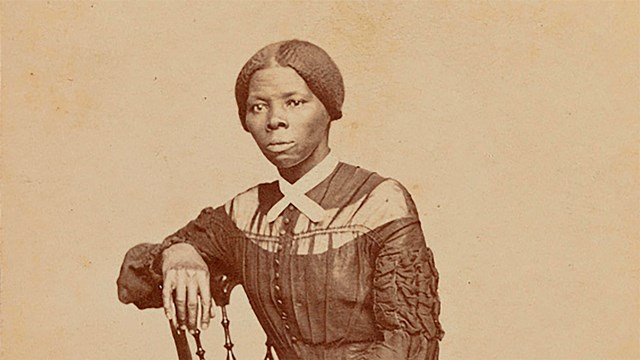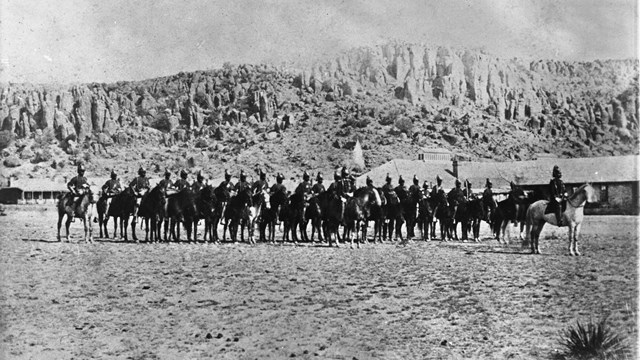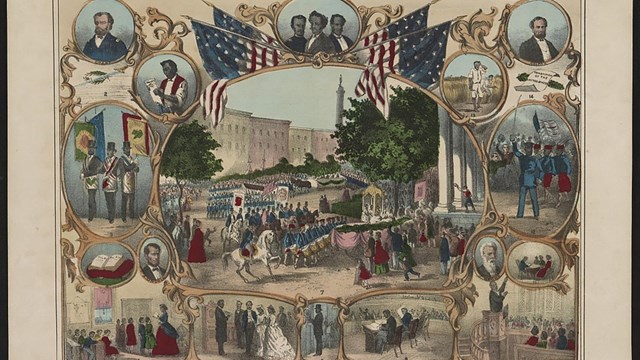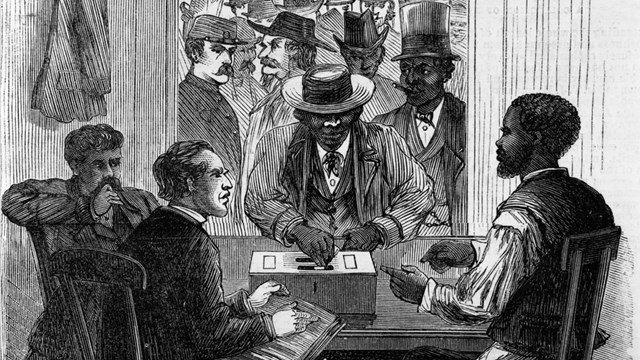
Library of Congress
The Reconstruction Era in the United States was the period from 1861 to 1900 that focused on the integration of newly freedpeople and the reintegration of former Confederates into the United States. During this period, The United States Army played a significant role in administrating former Confederate territory as well as dealing with the inundation of newly freed slaves. A series of legislation during the war began the process of emancipation and integration of slaves. The Confiscation Act of 1861 and 1862, freed all peoples enslaved in Confederate territories occupied by the US Army. President Lincoln issued the Emancipation Proclamation on January 1, 1863, that notionally changed the status of 3.5 million enslaved African Americans in Confederate territories to free, but the Proclamation left the status of another 500,000 enslaved in the Border States unaddressed.
After the war, the Freedman’s Bureau was established in 1865 with the purpose of assisting the formerly enslaved with food, housing, medical aid, schools, and legal assistance. Despite Presidential veto by Andrew Johnson, Congress passed the Reconstruction Acts of 1867, which outlined the process of reintegrating former Confederate territories and divided the former Confederacy into five military districts, to be administered by a military governor. By 1870, during the administration of President Ulysses S. Grant, all the Southern states were readmitted into the United States under new constitutions. The Southern states established new state governments. During Reconstruction three Constitutional Amendments were ratified to ensure the formerly enslaved certain rights as citizens of the United States. The 13th Amendment (1865) outlawed any type of slavery or involuntary servitude, the 14th Amendment (1868) was ratified which established citizenship and equal protection under the law for the freedpeople. The 15th Amendment (1870) forbade federal or state governments from denying citizens the right to vote based on their color or race. These Amendments to the Constitution are commonly referred to as the Reconstruction Amendments and outlined basic civil rights for all citizens, although at the time they were more aspirational than a concrete reality.
The controversial election of Rutherford B. Hayes in 1876 led to an agreement for the removal of US Army units from the former Confederate states. With the withdrawal of US Army personnel, Southern states were able to enact discriminatory laws that stripped Black Americans of their civil rights and voting rights. The Lodge Bill of 1890 was an attempt by Congress to curtail these laws and protect the black voters, but the bill failed to pass in the Senate. The Reconstruction period ended in 1900 with little to none of the radical progress made during the period left intact. Although the nation was united under new economic growth and saw the establishment of state funded public school systems and new education opportunities in the form of what would later be called Historically Black Colleges and Universities (HBCUs), the re-establishment of Black Codes and the rise of Jim Crow Laws prevented full Black enfranchisement and true civil rights. The legal rights of the Reconstruction Amendments would not be remotely recognized until the 1960s.
Learn More

Learn about the people of the Reconstruction Era.

Discover the places with Reconstruction Era stories.

Read the stories of the Reconstruction Era.

The Reconstruction Era National Historic Network is a collection sites throughout the nation with a documented connection to Reconstruction.

In 2017, the NPS published a theme study on Reconstruction. This provides an overview of the era, as well as key locations.
Last updated: November 13, 2024
